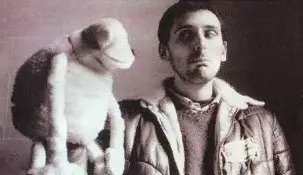Mr. Oizo — Flat beat. Story behind music, video and character

In the spring of 1998, sales at Levi’s dropped by 13%. They were behind other brands of jeans, Evisu and Diesel. An advertising agency received a task from the marketing department: distinguish the company from its competitors. This is where they discovered Quentin Dupieux’s four-minute M-Seq video with his friend traveling in an old Honda in the company of the orange and fluffy Stéphane. They got in touch with the Frenchman. At the time, he was releasing strange little records on the label of the techno legend Laurent Garnier, who he met (also very luckily) when the veteran bought a used car from Quentin’s father. Dupieux shot two videos for his patron: about



